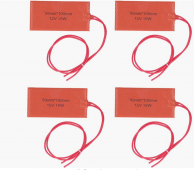Vision.Urban.Reed
New Member
Hello! If anyone has any time to help me confirm the validity of my very simple battery heating pads circuit, I would be VERY grateful.
Here is the diagram I drew. I will have this W1209 thermostat switch (also attached in photos) activate when the temperature has dropped towards 0c freezing, to protect my Lifepo4 battery.
My primary concern is that the W1209 already has a 20 amp relay on it, and since my heating pad load will be reaching a total of 60 amps, I am thinking about putting in a 60 amp relay coming off of the W1209 20 amp relay to switch the 60 amps of heating pads on. Makes me nervous, but I do not yet know why.... I just do not know enough yet.
Per Will's advice, I will install these heaters on some sheet metal and surround the battery to disperse the heat instead of directly on the battery.
THANK YOU in advance if you could give me a nod of approval!
Photos attached below.
Here is the diagram I drew. I will have this W1209 thermostat switch (also attached in photos) activate when the temperature has dropped towards 0c freezing, to protect my Lifepo4 battery.
My primary concern is that the W1209 already has a 20 amp relay on it, and since my heating pad load will be reaching a total of 60 amps, I am thinking about putting in a 60 amp relay coming off of the W1209 20 amp relay to switch the 60 amps of heating pads on. Makes me nervous, but I do not yet know why.... I just do not know enough yet.
Per Will's advice, I will install these heaters on some sheet metal and surround the battery to disperse the heat instead of directly on the battery.
THANK YOU in advance if you could give me a nod of approval!
Photos attached below.





